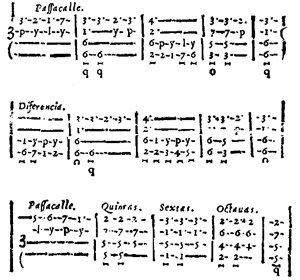A happy Sunday, friends. It’s a new month, & I have a fun theme for February’s Early Music Sunday posts: duets. Yes, here in the Valentine’s month we’ll be having our early music each Sunday from a pair of musicians.
The two musicians this Sunday are both major figures in the early music field. Arianna Savall is the daughter of Jordi Savall & Montserrat Figueras. As a member of the Savall family, she has participated in Hespèrion XXI, Le Concert des Nations & similar projects—& Arianna Savall brings her own formidable musical talent to both these settings & to her solo work. Besides being a virtuoso harpist, she also is a singer with operatic tone & range & a truly beautiful voice. In addition, she is a talented composer.
Pedro Estavan is a percussionist of the first rank, who is considered a premier player both in his ensemble work—& he has collaborated in a number of the Savall projects—as well as performing as a concert soloist. He has done much work in early music, but he also is a master of contemporary styles & African percussion. I always enjoy listening to the parts he plays as he is a most sensitive player who can support & respond in ways that are always highly musical.
This particular piece was performed in 2002 at the Festival de Lanvellec, & is from the same concert of Folías de España as the Antonio Martín y Coll “Diferencias sobre las folias” piece I posted earlier. In fact, the full concert can be seen on YouTube here; it’s about 53 minutes long, but I recommend it highly for anyone who finds themselves intrigued by early music. As far as today’s piece go, I love the interplay between the harp & the tambourine; it is one of my very favorite duets.
Lucas Ruiz de Ribayaz was a Spanish composer & guitarist who flourished in the mid 17th century; the link, by the way, will take you to French Wikipedia, as there seems to be almost no information on Ribayaz in English—& very little in any language for that matter! At any rate, it seems Ribayaz was assigned to the court of the Viceroy of Lima in Peru around 1675, & after he returned to Europe he published a work known as Luz y Norte Musical, which contained pieces in tablature for both harp & Renaissance guitar, as well as information about playing techniques. The “Tarentela” comes from that publication.
This is very lovely music—hope you enjoy it.
Image links to its source at http://simplearp.free.fr; it shows a section of harp tablature from Luz Y Norte

Great music for a Sunday morning. Thanks, John!
ReplyDeleteThanks, Roy--glad you enjoyed it!
Delete